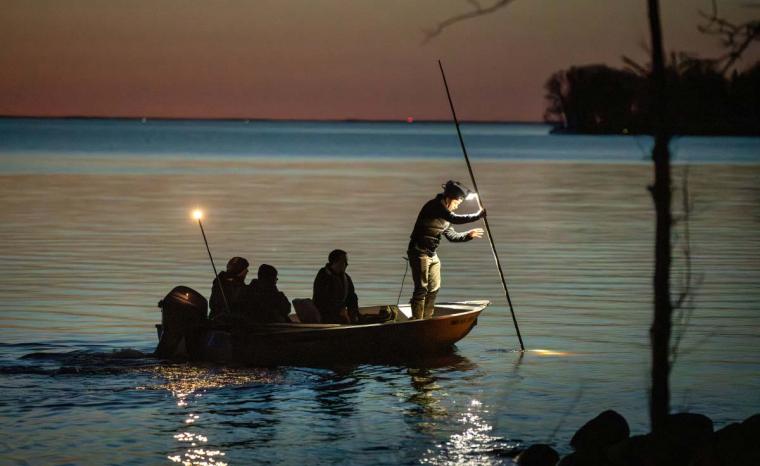In the Great Lakes region, lakes can appear to be on fire at night. During spearfishing season starting in the spring, these large bodies of water such as Mille Lacs Lake in Minnesota are peppered with small boats that are alight with lamps and carrying Indigenous fishers waiting for that perfect moment to spear their catch for the season.
Many of the bands of Ojibwe peoples (who the French called the Chippewa) negotiated independent treaties with the federal government that state in exchange for these peoples giving up a portion of their lands, they retain the right to fish the upper Great Lakes and surrounding waters, including Mille Lacs Lake. In Wisconsin, these bands include the Lac Du Flambeau (Lake of Torches), a name that was inspired by the Indigenous method of spearfishing. This would involve dipping a piece of wood in pine pitch, attaching it to a canoe and lighting it so that the fire would illuminate the water. During spring, the reflective eyes of walleye swimming nearshore to spawn would help fishers identify them.
Although today torches have been replaced with lamps and wood spears with metal ones, spearfishing is still essential for many tribal members’ annual food supply. Chato Gonzalez of the Lac Courte Oreilles Band said he can spear what his family needs in just a couple of trips, yet he will also fish for other tribal members who don’t have the ability to be out on the water. However, said Gonzalez, this is not just about the haul. “A lot of it is about the process, thinking about being out there in the same place where your ancestors were,” he said. He learned how to spearfish from a Lac Courte Oreilles man he calls his “owiiyawen’enyan” (his namesake). Now Gonzalez is teaching family members and others how to spearfish on Mille Lacs Lake, just an hour away from their home on Ojibwe land. He said, “It is a spiritual connection, being out on the lake and with the fish.”

